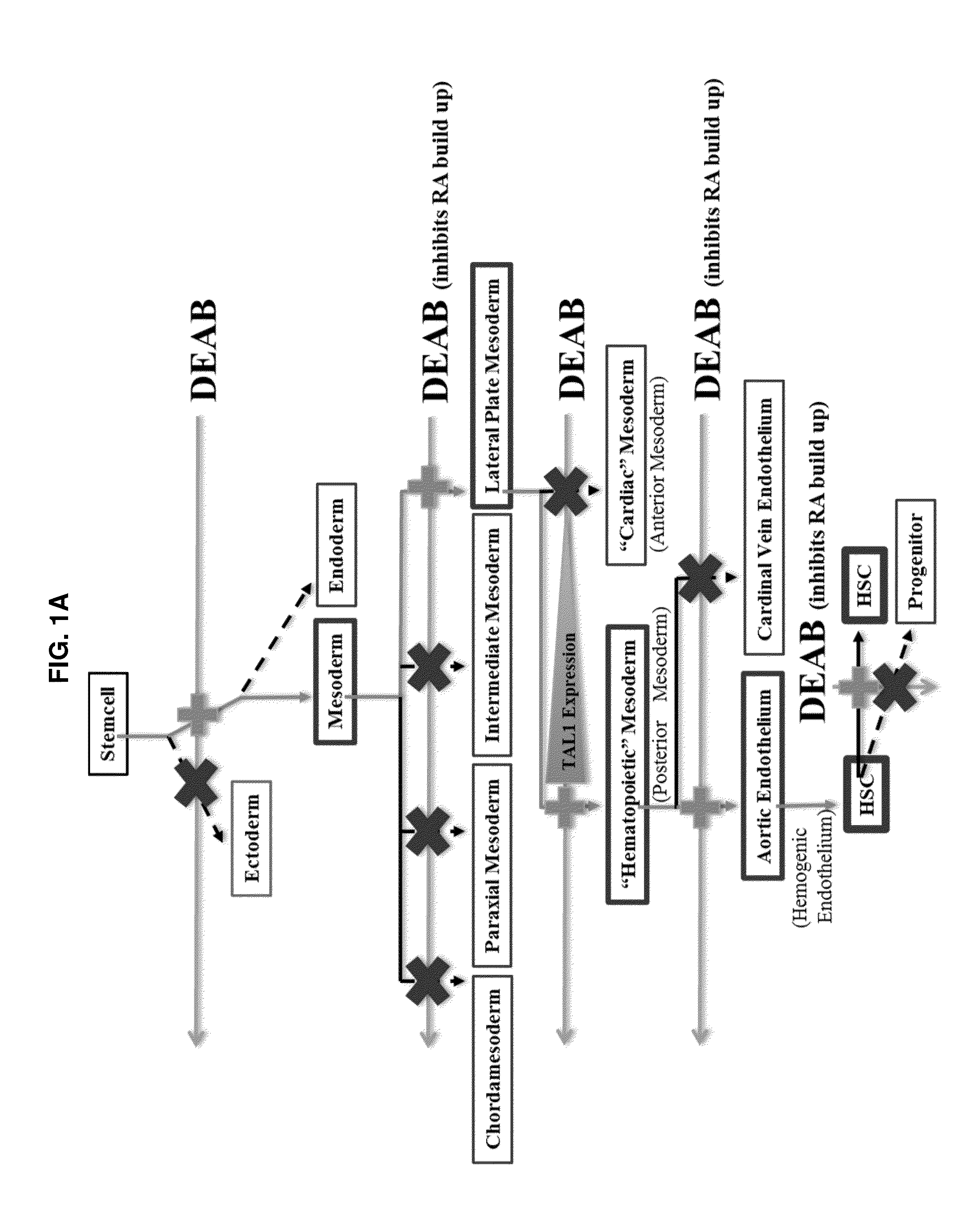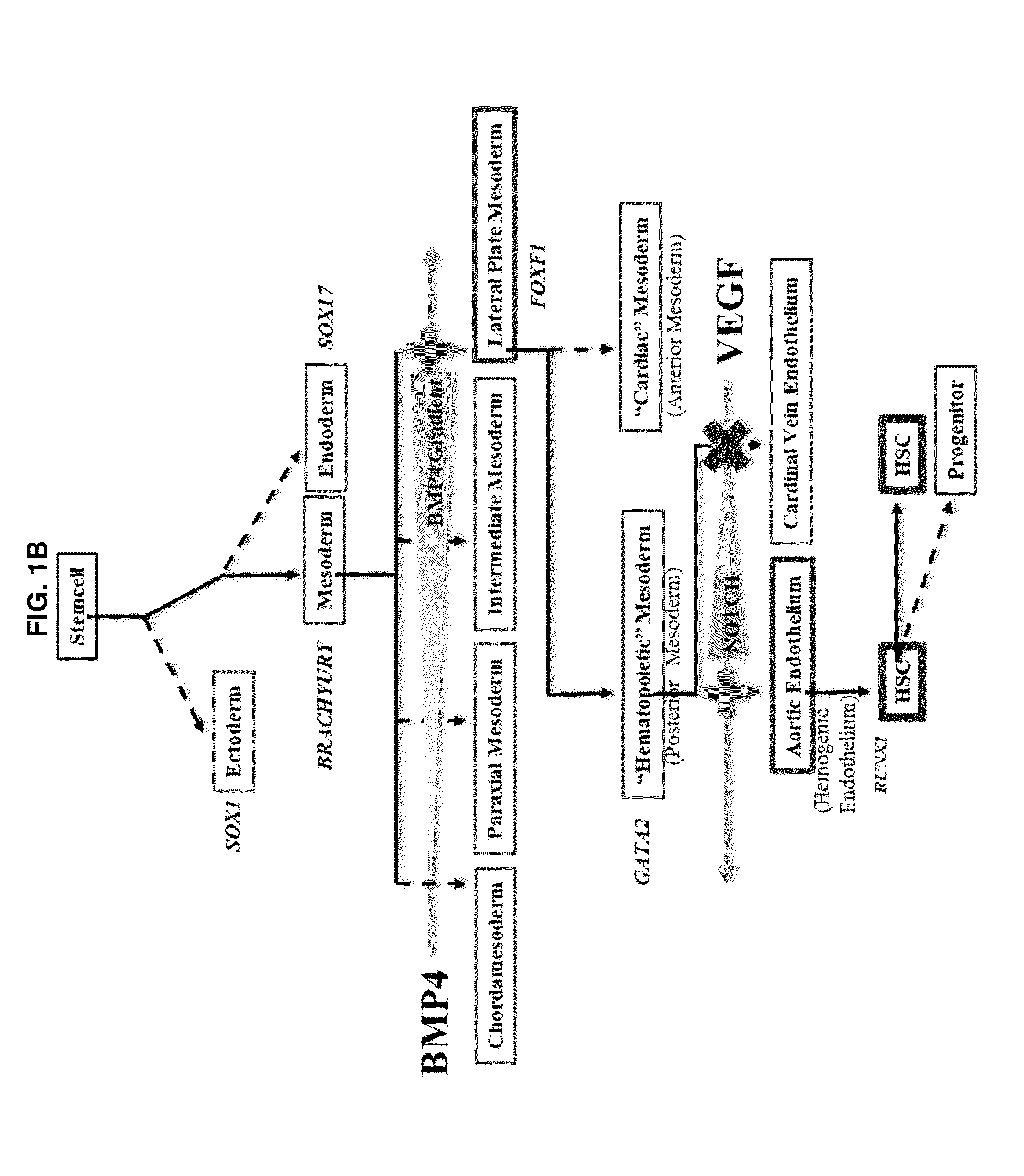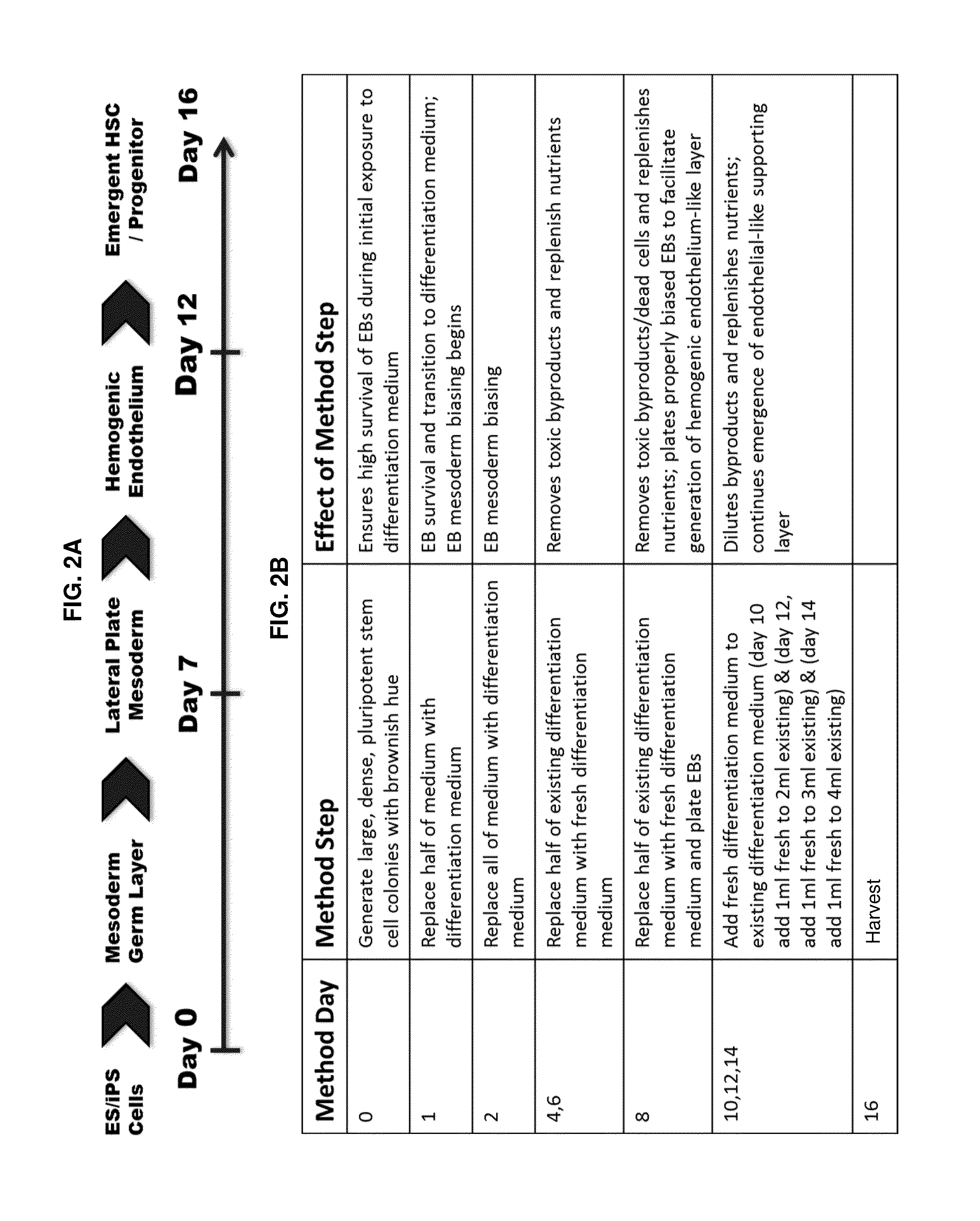Compositions and methods for differentiating pluripotent stem cells into primitive blood cells and uses thereof
a technology of pluripotent stem cells and primitive blood cells, which is applied in the field of compositions and methods for differentiating pluripotent stem cells into primitive blood cells, can solve the problems of difficult recapitulation of embryonic development in vitro, disorganized, and semi-complete organ system development, and current published in vitro protocols demonstrate very limited efficiency in differentiating es and ips cells to hematopoietic lineages. , the effect of increasing the expression of factors associated
- Summary
- Abstract
- Description
- Claims
- Application Information
AI Technical Summary
Benefits of technology
Problems solved by technology
Method used
Image
Examples
example 1
Small Molecule Screen
[0137]A small molecule screen was performed to identify compounds that improve the output of hematopoietic progenitor cells (HPCs; CD45+, CD43+, CD34+) and phenotypic hematopoietic stem cells (HSCs; CD45+, CD43+, CD34+, CD38−, CD90+, CD45RA−) differentiated from pluripotent stem cells. Molecules targeting pathways known or suspected of being important in hematopoiesis were screened. The screened molecules included garcinol (10 μM), a histone acetyltransferases (HATs) inhibitor; pifithrinA (10 μM), a p53 tumor suppressor protein inhibitor, to minimize DNA damage from oxidative stress; CHIR99021 (1 μM), a GSK3 inhibitor, to activate the Wnt pathway for enhancing specification of lateral plate mesoderm to posterior lateral plate mesoderm; SRT1720 (1 μM), an activator or enhancer of SIRT1 enzymatic efficiency; deferoxamine (1 μM), an inducer of hypoxia-like responses in cells through induction / activation of HIF-1a; diethylaminobenzaldehyde (DEAB; 10 μM), a retinoic ...
example 2
Effects of DEAB
[0138]From Example 1, DEAB was selected to move forward into an experiment further establishing the phenotypes of blood cells emerging from the differentiation in order to identify at what stage of differentiation DEAB may exert its effects. Pluripotent stem cells (iPS and ES) were grown and induced to produce embryoid bodies on Day 8 as described. The EBs were then exposed to Differentiation Medium 1 for a total of 8 days with partial medium changes made every other day as described. Cells were harvested on Day 16 and washed in phosphate-buffered saline (PBS) supplemented with 2% FBS. Adherent cells were individualized using TrypLE (Life Technologies, Carlsbad Calif.), passed through a 27.5-gauge needle and filtered through a 40-70 μm cell strainer (BD Falcon, San Diego, Calif., www.bdbiosciences.com). Cells were treated with 7-aminoactinomycin D before analysis and positive cells were gated out of results. Cells were stained with fluorescence conjugated antibodies f...
example 3
CFU Results with DEAB
[0140]For the Colony Forming Unit (CFU) assays using methyl cellulose cultures, 25% of the cells harvested for Example 2 were plated into in 2 ml of MethoCult H4435 (STEMCELL Technologies, Vancouver, BC) in six-well plates. Alternatively, sorted CD45+, CD43+, CD34+, 7AAD-cells were sorted and plated at 500 cells per 2 ml MethoCult media. Cells were incubated for 14 days in a humidified incubator at 37° C. with 5% CO2 and evaluated for colonies by bright-field microscopy (Zeiss, Oberkochen, Germany, www.zeiss.com) Axiovert 200 with a Zeiss Axiocam).
[0141]The results of this experiment are shown in FIG. 5. The data show that 10 UM DEAB enables measurable levels of all four major CFU assay types (CFU-G, CFU-M, CFU-GEMM, BFU-E to be obtained and that the total number of colonies counted in the assay more than double the number of colonies obtained from identical assay when using cells not differentiated in the presence of DEAB (DMSO control).
PUM
| Property | Measurement | Unit |
|---|---|---|
| concentration | aaaaa | aaaaa |
| concentration | aaaaa | aaaaa |
| concentration | aaaaa | aaaaa |
Abstract
Description
Claims
Application Information
 Login to View More
Login to View More - R&D
- Intellectual Property
- Life Sciences
- Materials
- Tech Scout
- Unparalleled Data Quality
- Higher Quality Content
- 60% Fewer Hallucinations
Browse by: Latest US Patents, China's latest patents, Technical Efficacy Thesaurus, Application Domain, Technology Topic, Popular Technical Reports.
© 2025 PatSnap. All rights reserved.Legal|Privacy policy|Modern Slavery Act Transparency Statement|Sitemap|About US| Contact US: help@patsnap.com



